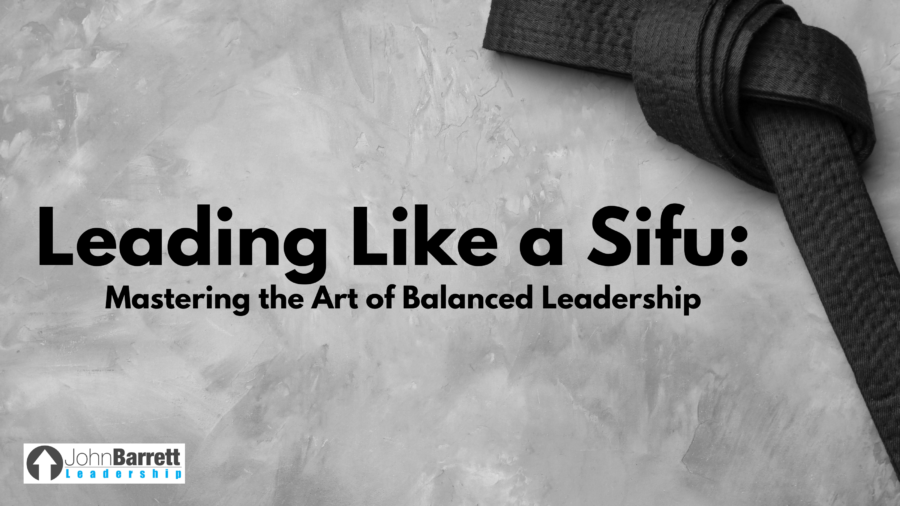Leading Like a Sifu: Mastering the Art of Balanced Leadership
In the fast-paced world of leadership, maintaining balance can feel like an elusive pursuit. You are constantly bombarded with challenges, opportunities, and decisions that require you to stay focused and effective. One profound piece of wisdom from Sifu Ted Wong, a top student of Bruce Lee, can give great insight into balanced leadership.
Wong often asked his students, “What is the process of walking?” Inevitably, the answer would be, “Putting your foot out in front of you.” Wong would correct them, saying, “No. If you only put your foot in front of you, you do not move. In order to move, you must throw yourself off balance; your foot just catches your fall.” This concept is a powerful metaphor for leadership.
Let’s explore how to effectively use this wisdom to lead by understanding the delicate dance between balance and forward momentum.
Understanding Balance and Movement
Much like walking, leadership involves a constant shift between stability and motion. Staying rooted in one place leads to stagnation; the willingness to throw yourself off balance initiates progress. You must learn to balance the need for stability with the necessity of change. This means being open to new ideas, taking calculated risks, and adapting. Remember, anything growing will always change.
Throwing Yourself Off Balance
You must be willing to disrupt the status quo to initiate growth and innovation. This requires taking risks and stepping out of your comfort zone. By doing so, you inspire your team to explore new possibilities and approach problems with fresh perspectives.
Maintaining a Clear Vision
A clear vision acts as your guiding star. It provides direction and purpose, ensuring that every step is aligned with your organization’s goals. When you articulate a compelling vision, you create a shared purpose that motivates and unites your team.
Building a Strong Foundation
Effective leadership is built on trust, communication, and collaboration. You must invest in building strong relationships with your team members, fostering an environment where everyone feels valued and heard. This foundation of trust enables your team to work cohesively and support one another through challenges.
Encouraging Adaptability
In a rapidly changing world, adaptability is critical to sustaining success. You must cultivate a culture of flexibility, encouraging your team to be open to change and quick to adapt. This involves continuous learning, staying informed about industry trends, and being willing to pivot strategies when necessary.
Applying Sifu Wong’s Wisdom in Leadership
The Art of Taking Risks
Just as walking requires throwing yourself off balance, leadership demands the courage to take risks. You should evaluate potential opportunities and weigh the risks against the rewards. Taking calculated risks can drive innovation and seize new opportunities that propel your organization forward.
Learning from Failure
Setbacks are an inevitable part of your leadership journey. Instead of fearing failure, you should view it as a valuable learning experience. Analyzing mistakes and extracting lessons from them can lead to improved strategies and better decision-making in the future.
Fostering Resilience
Resilience is the ability to bounce back from adversity. You should model resilience by maintaining a positive attitude, staying focused on solutions, and supporting your team through difficult times. This resilience ensures that your organization remains strong and capable of overcoming any challenges that arise.
The wisdom of Sifu Ted Wong offers profound insights into the art of balanced leadership. Just as walking requires a delicate interplay between balance and movement, leadership demands staying grounded while pushing forward. By understanding the importance of stability, taking calculated risks, learning from failure, and fostering resilience, you can guide your organization to new heights. True progress comes from the willingness to throw yourself off balance and the skill to catch your fall.









